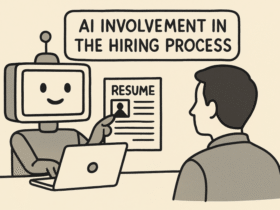Retirement is often seen as a time of relaxation and freedom, but without proper planning, it can quickly turn into a source of stress and worry. Many people imagine they will simply stop working one day and enjoy the fruits of their labor, but to truly enjoy a comfortable retirement, thoughtful preparation is essential. From creating a savings plan to understanding how reverse mortgages can help unlock the value in your home, there are many steps you can take to ensure that your retirement years are stress-free.
The key to securing a worry-free retirement lies in taking a proactive approach. The earlier you start planning and saving, the more time you’ll have to build your nest egg. Even if retirement feels distant, making small changes today can have a big impact down the road. Whether you’re decades away from retirement or nearing the finish line, it’s never too early or too late to begin securing your future.
1. Start Saving Early — And Automate It
The earlier you begin saving for retirement, the more your money will work for you through compound interest. If you can start in your 20s or 30s, you’ll have the advantage of more time to grow your savings. Even small amounts saved regularly can accumulate over time.
To make saving easier, automate your contributions. Set up a direct deposit or automatic transfer to your retirement account, so you’re less tempted to spend that extra money. If your employer offers a 401(k) plan with a match, take full advantage of it. It’s essentially free money!
2. Build a Diverse Investment Portfolio
Investing your money is one of the most effective ways to grow your retirement savings. However, simply stashing cash in a savings account likely won’t provide the returns you need. That’s why it’s important to create a diverse investment portfolio, including stocks, bonds, and real estate.
Stocks offer high potential growth, but they come with risk. Bonds tend to be safer but offer lower returns. Real estate investments can provide passive income through rental properties or appreciation. A mix of these investment options will help you balance risk and reward, and ensure your retirement savings have the best chance to grow.
3. Focus on Retirement Accounts: 401(k) and IRA
Take advantage of retirement-specific accounts like a 401(k), IRA, or Roth IRA. These accounts offer tax benefits that can help you save more efficiently.
- 401(k): If your employer offers a 401(k) plan, contribute as much as you can, especially if they match your contributions. The tax-deferred growth on a 401(k) can significantly boost your retirement savings.
- IRA (Individual Retirement Account): An IRA offers more flexibility than a 401(k), allowing you to invest in a broader range of assets. Whether you choose a traditional IRA or a Roth IRA (where contributions are made after-tax but withdrawals are tax-free), these accounts can provide valuable tax advantages.
- Roth IRA: If you expect your tax bracket to be higher in retirement, a Roth IRA is a great option since your contributions are taxed upfront, but withdrawals are tax-free when you retire.
4. Create a Budget and Track Your Spending
To secure a worry-free retirement, you need to know where your money is going. A budget is the foundation of a strong financial plan. When you have a clear picture of your income, expenses, and savings goals, you can make adjustments to ensure you’re setting aside enough for retirement.
Use budgeting tools or apps to track your spending and identify areas where you can cut back. The more you save now, the more you can invest for your future.
5. Plan for Healthcare Costs
Healthcare can be one of the biggest expenses in retirement. While Medicare covers many expenses for those 65 and older, it doesn’t cover everything. Long-term care, prescriptions, and certain treatments can still leave you with significant out-of-pocket costs.
Consider looking into long-term care insurance or setting aside extra savings to cover these future expenses. By planning ahead, you can avoid unexpected medical bills that could eat into your retirement nest egg.
6. Pay Off Debt Before Retiring
Entering retirement with debt can significantly increase your financial stress. Aim to pay off high-interest debt, like credit cards, as quickly as possible. Once that’s done, focus on paying down student loans, car loans, and mortgages. The less debt you have in retirement, the more of your income will go toward enjoying your free time rather than paying off interest.
If you’re still paying a mortgage in retirement, consider whether you want to downsize or pay off your mortgage early. Eliminating monthly debt payments will allow you to live more comfortably without the pressure of ongoing obligations.
7. Create a Withdrawal Strategy
Once you’ve reached retirement, you’ll need a strategy for withdrawing your savings. For some homeowners, a reverse mortgage could be a useful option to convert the equity in their home into cash. A reverse mortgage allows you to borrow against the value of your home without having to sell it, and you don’t need to repay the loan until you sell the home, move out, or pass away. It can provide additional income to help cover living expenses.
It is important to analyze reverse mortgage pros and cons. Reverse mortgages come with certain risks and costs, so it’s important to fully understand the terms and speak with a financial advisor before considering it as part of your retirement strategy. This option might be particularly helpful if you’ve built up significant equity in your home but have little other savings or investments.
8. Keep Emergency Funds
Having an emergency fund is crucial, even during retirement. Ideally, you should have enough set aside to cover three to six months’ worth of living expenses in case of unexpected events. This fund will give you peace of mind knowing that you have a safety net if something goes wrong, whether it’s a home repair, medical emergency, or an unexpected dip in income.
9. Consider Working Part-Time
Many people in retirement choose to work part-time to stay active and supplement their retirement income. Whether it’s freelancing, consulting, or working in a completely different field, part-time work can help ease financial concerns while giving you the flexibility to enjoy life. Plus, staying active can help with both your mental and physical well-being.
10. Regularly Review Your Plan
Retirement planning isn’t a one-and-done task; it requires regular reviews. Your financial situation, goals, and the economy can change over time. Make sure to revisit your retirement strategy at least once a year to assess if your savings are on track or if adjustments are needed. This includes rebalancing your investment portfolio, adjusting your savings rate, or updating your withdrawal strategy.
Conclusion
Securing a worry-free retirement doesn’t happen overnight. It requires careful planning, disciplined saving, and making informed decisions about your finances. Whether you’re just starting out or are nearing retirement age, it’s never too early or too late to take control of your future. By starting early, diversifying your investments, taking advantage of retirement accounts, and incorporating strategies like reverse mortgages, you can set yourself up for a future that’s not only financially secure but also stress-free. Remember, small steps today lead to big results tomorrow—so start planning now for the comfortable retirement you deserve.







